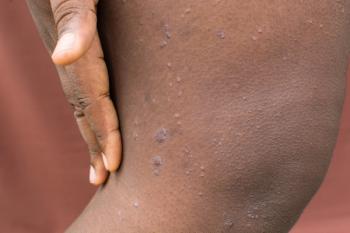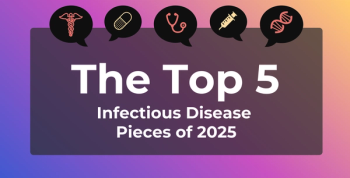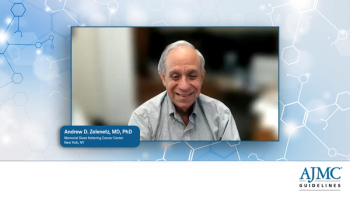
Considerations for Newly Diagnosed Multiple Myeloma
Sagar Lonial, MD, FACP: When we think about newly diagnosed myeloma, there are a couple of different settings where that really comes into play. And there have been some artificial guidelines of eligible versus noneligible for transplant. That, in Europe, means 65 or older, or younger than 65. And I think in the United States, we don’t take it quite so clear as a line. And in fact, at our center, we’ll transplant up to, and sometimes at, age 80. So it’s really more about performance status than age as a determinant of therapy.
We know that there are several guidelines that suggest a triplet now has become a standard for younger, fitter patients. And so the triplets typically involve either an IMiD [immunomodulatory drug] and a proteasome inhibitor together, such as VRd [bortezomib, lenalidomide, dexamethasone] or KRd [carfilzomib, lenalidomide, dexamethasone]. There are certainly data on IRd [ixazomib, lenalidomide, dexamethasone] as well. And then the use of cyclophosphamide in combination with a proteasome inhibitor as well—VCd [bortezomib, cyclophosphamide, dexamethasone] or KCd [carfilzomib, cyclophosphamide, dexamethasone].
In the transplant-ineligible setting, I think lenalidomide/dexamethasone has become a standard go-to because of its ease of administration and tolerability. There are data from the SWOG studies suggesting VRd has good activity there. RVd-lite is clearly active. And recently, we’ve seen data with daratumumab in combination with melphalan/prednisone/bortezomib [Velcade] that clearly were superior to MPV [melphalan, prednisone, bortezomib] in the setting of frail or older transplant-ineligible patients.
At our center, it is a go-to approach to use the RVd-based approach, the IMiD/proteasome inhibitor combination. Even in patients who present with renal failure who are in the hospital, for instance, we’ll use VTd [bortezomib, thalidomide, dexamethasone] in those patients and really try to avoid the use of cyclophosphamide, mostly because it’s our belief, and there are now some emerging data suggesting low-dose alkylators may actually make the mutation burden worse in the long term and make it harder to salvage patients. They are very anecdotal data, but certainly, that’s a concern we have.
For frailer, older patients, we probably go back and forth between RVd-lite, which is a modification of the dosing and schedule for both bortezomib and lenalidomide, or with lenalidomide/dexamethasone. And I think we’re all really excited to see data on lenalidomide/dexamethasone plus daratumumab, which we think will become another standard potentially, as well as lenalidomide/dexamethasone plus elotuzumab because I think that would be potentially another easier approach for frailer patients.
I think the whole idea and questions of sequencing that come up over and over again, especially since we have so many drugs in the context of myeloma, to me, it’s important when a patient presents to hit them with the most effective treatments you have available because that’s likely when the disease is most sensitive. And so I don’t think about saving drugs for later because I know that through clinical trials, we’ll always have something else to use down the road. And so we use combinations early, combinations in the relapsed setting, and then again try to use combinations as much as we can, unless performance status really becomes a limiting factor.
When you’re thinking about individualized treatments, I think it’s important to realize that you want to give the most effective therapy you can for almost all patients in the up-front setting. So our choice of initial induction is really defined more by frailty than it is by a person’s genetics or by high risk versus standard risk in the context of newly diagnosed myeloma. Where we put in the rub of personalization of therapy is in the maintenance setting. So patients who have high-risk disease get maintained differently from patients who had standard-risk disease, and we found that to be very effective.
Newsletter
Stay ahead of policy, cost, and value—subscribe to AJMC for expert insights at the intersection of clinical care and health economics.







































